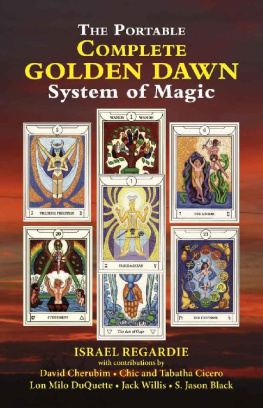The Project Gutenberg EBook of A Classification and Subject Index for
Cataloguing and Arranging the Books and Pamphlets of a Library [Dewey Decimal Classification], by Melvil Dewey
This eBook is for the use of anyone anywhere at no cost and with
almost no restrictions whatsoever. You may copy it, give it away or
re-use it under the terms of the Project Gutenberg License included
with this eBook or online at www.gutenberg.net
Title: A Classification and Subject Index for Cataloguing and Arranging the Books and Pamphlets of a Library [Dewey Decimal Classification]
Author: Melvil Dewey
Release Date: June 4, 2004 [EBook #12513]
Language: English
*** START OF THIS PROJECT GUTENBERG EBOOK DEWEY DECIMAL CLASSIFICATION ***
Produced by Suzanne Shell, Lesley Halamek and PG Distributed Proofreaders
DEWEY DECIMAL CLASSIFICATION
CENTENNIAL 1876-1976
Facsimile reprinted
by
Forest Press Division
Lake Placid Educational Foundation
Printed and Bound Kingsport Press, Inc. KINGSPORT, TENNESSEE
A
CLASSIFICATION
AND
SUBJECT INDEX
FOR
CATALOGUING AND ARRANGING
THE
BOOKS AND PAMPHLETS
OF A
LIBRARY.
AMHERST, MASS.
1876.
COPYRIGHTED
1876
MELVIL DEWEY
CONTENTS
PREFACE
The plan of the following Classification and Index was developed early in 1873. It was the result of several months' study of library economy as found in some hundreds of books and pamphlets, and in over fifty personal visits to various American libraries. In this study, the author became convinced that the usefulness of these libraries might be greatly increased without additional expenditure. Three years practical use of the system here explained, leads him to believe that it will accomplish this result; for with its aid, the catalogues, shelf lists, indexes, and cross-references essential to this increased usefulness, can be made more economically than by any other method which he has been able to find. The system was devised for cataloguing and indexing purposes, but it was found on trial to be equally valuable for numbering and arranging books and pamphlets on the shelves.
The library is first divided into nine special libraries which are called Classes. These Classes are Philosophy, Theology, &c., and are numbered with the nine digits. Thus Class 9 is the Library of History; Class 7, the Library of Fine Art; Class 2, the Library of Theology. These special libraries or Classes are then considered independently, and each one is separated again into nine special Divisions of the main subject. These Divisions are numbered from 1 to 9 as were the Classes. Thus 59 is the 9th Division (Zoology) of the 5th Class (Natural Science). A final division is then made by separating each of these Divisions into nine Sections which are numbered in the same way, with the nine digits. Thus 513 is the 3d Section (Geometry) of the 1st Division (Mathematics) of the 5th Class (Natural Science). This number, giving Class, Division, and Section, is called the Classification or Class Number, and is applied to every book or pamphlet belonging to the library. All the Geometries are thus numbered 513, all the Mineralogies 549, and so throughout the library, all the books on any given subject bear the number of that subject in the scheme. Where a 0 occurs in a class number, it has its normal zero power. Thus, a book numbered 510, is Class 5, Division 1, but no Section. This signifies that the book treats of the Division 51 (Mathematics) in general, and is not limited to any one Section, as is the Geometry, marked 513. If marked 500, it would indicate a treatise on Science in general, limited to no Division. A zero occurring in the first place would in the same way show that the book is limited to no Class. The classification is mainly made by subjects or content regardless of form; but it is found practically useful to make an additional distinction in these general treatises, according to the form of treatment adopted. Thus, in Science we have a large number of books treating of Science in general, and so having a 0 for the Division number. These books are then divided into Sections, as are those of the other Classes according to the form they have taken on. We have the Philosophy and History of Science, Scientific Compends, Dictionaries, Essays, Periodicals, Societies, Education, and Travels,--all having the common subject, NATURAL SCIENCE, but treating it in these varied forms. These form distinctions are introduced here because the number of general works is large, and the numerals allow of this division, without extra labor for the numbers from 501 to 509 would otherwise be unused. They apply only to the general treatises, which, without them, would have a class number ending with two zeros. A Dictionary of Mathematics is 510, not 503, for every book is assigned to the most specific head that will contain it, so that 503 is limited to Dictionaries or Cyclopedias of Science in general. In the same way a General Cyclopedia or Periodical treats of no one class, and so is assigned to the Class 0. These books treating of no special class, but general in their character, are divided into Cyclopedias, Periodicals, etc. No difficulty is found in following the arithmetical law and omitting the initial zero, so these numbers are printed 31, 32, etc., instead of 031, 032, etc.
The selection and arrangement of the thousand headings of the classification cannot be explained in detail for want of space. In all the work, philosophical theory and accuracy have been made to yield to practical usefulness. The impossibility of making a satisfactory classification of all knowledge as preserved in books, has been appreciated from the first, and nothing of the kind attempted. Theoretical harmony and exactness has been repeatedly sacrificed to the practical requirements of the library or to the convenience of the department in the college. As in every scheme, many minor subjects have been put under general heads to which they do not strictly belong. In some cases these headings have been printed in a distinctive type, e. g., 429 Anglo-Saxon, under ENGLISH PHILOLOGY. The rule has been to assign these subjects to the most nearly allied heads, or where it was thought they would be most useful. The only alternative was to omit them altogether. If any such omission occurs, it is unintentional and will be supplied as soon as discovered. Wherever practicable the heads have been so arranged that each subject is preceded and followed by the most nearly allied subjects and thus the greatest convenience is secured both in the catalogues and on the shelves. Theoretically, the division of every subject into just nine heads is absurd. Practically, it is desirable that the classification be as minute as possible without the use of additional figures, and the decimal principle on which our scheme hinges allows nine divisions as readily as a less number. This principle has proved wholly satisfactory in practice though it appears to destroy proper co-ordination in some places. It has seemed best in our library to use uniformly three figures in the class number. This enables us to classify certain subjects very minutely, giving, for example, an entire section to Chess. But the History of England has only one section, as our scheme is developed, and thus the two might be said to be co-ordinated. The apparent difficulty in such cases is entirely obviated by the use of a fourth figure, giving nine sub-sections to any subject of sufficient importance to warrant closer classification. In history where the classification is made wholly by countries, a fourth figure is added to give a division into








